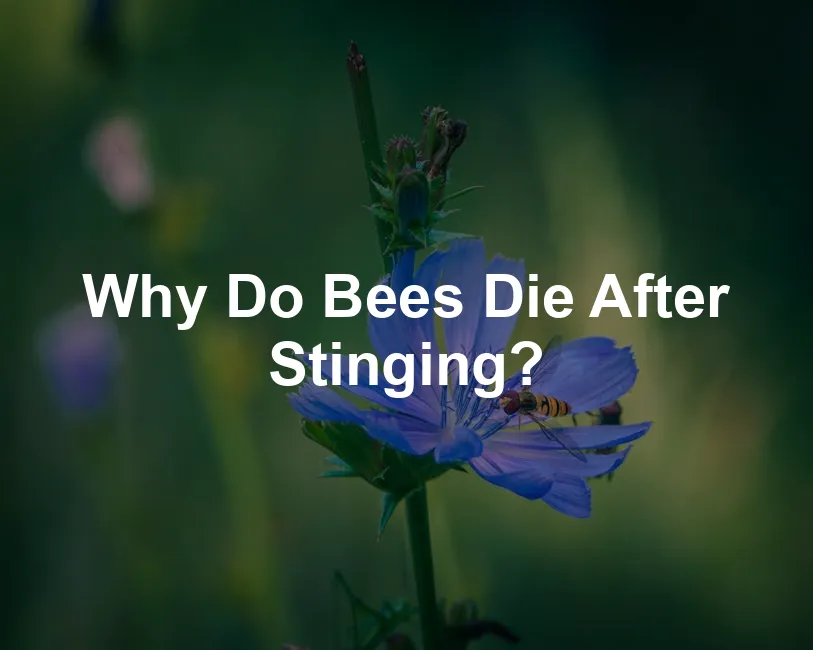
Why Do Bees Die After Stinging?
Introduction
Bee stings are infamous for their pain, but did you know honeybees often meet their end after delivering one? This common belief has a basis in fact, as honeybees typically die post-sting. Understanding this behavior is crucial for grasping bee biology and their role in ecosystems. By examining this phenomenon, we can appreciate the sacrifices these tiny creatures make for their colonies. This article aims to unravel the reasons behind this deadly behavior and its implications for both bees and us humans.
And speaking of bee stings, if you want to be prepared for any unfortunate encounters, consider getting a reliable First Aid Kit. It’s a must-have for any outdoor adventure, ensuring you’re ready for anything life throws your way!
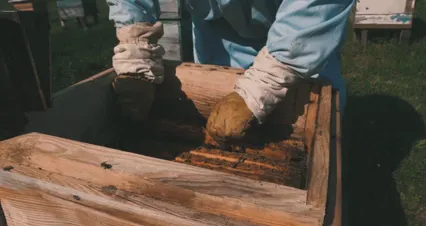
The Anatomy of a Bee Sting
Structure of the Sting
Honeybee stingers are fascinating little instruments of nature. They feature a barbed design that resembles a harpoon, which is no accident. Each stinger comprises two lancets, which are sharp, saw-toothed blades. These barbs face outward, ensuring that once they penetrate skin, they’re not coming out easily. This structure is a modified ovipositor, originally used for laying eggs. The stinger’s primary purpose evolved into delivering venom, providing a potent defense mechanism for the hive.
Mechanism of Action
When a honeybee decides to sting, it’s not a casual affair. The bee lands on its target, punctures the skin, and begins the injection of venom. Here’s where the magic happens: the barbed stinger gets stuck in the victim’s skin. As the bee tries to escape, it tears away part of its abdomen, which includes vital organs, muscles, and the venom sac. This gruesome process leads to a slow death, often a few minutes later. But wait, the drama doesn’t end there! Even after the bee flies off, the stinger remains, continuing to pump venom into the wound for several minutes. This design ensures that the venom does maximum damage, acting as a deterrent to threats.
In summary, the anatomy of the honeybee’s stinger is a marvel of evolution, providing both an effective means of defense and, ultimately, a deadly fate for the bee itself. Knowing this can transform the way we view these little warriors of nature. If you ever find yourself in need of relief from a bee sting, consider using a Bee Sting Relief Cream. It’s like a soothing balm for your skin and your soul!
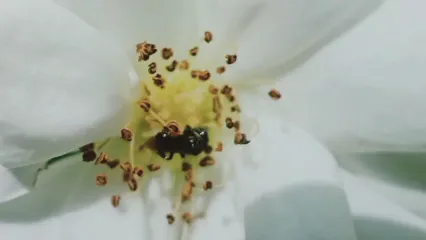
Why Do Honeybees Die After Stinging?
The Consequence of Barbed Stingers
Honeybees have a unique stinger that acts like a tiny harpoon. Its barbed design is a double-edged sword. When a honeybee stings a thick-skinned animal, like a human, the stinger becomes lodged in the skin. Unlike other bee species, honeybees can’t simply pull out their stingers and make a quick getaway. Instead, the attempted escape leads to a gruesome fate.
As the bee pulls away, it tears away a significant portion of its abdomen, leaving behind vital organs, muscles, and even part of its digestive tract. This isn’t just a minor injury; it’s akin to a slow bleed-out. Though bees don’t have traditional blood, they lose what is essentially their clear insect fluid. This horrific process means the bee will die shortly after the sting, often within minutes. To add insult to injury, even after the bee has departed, the stinger remains embedded, continuing to pump venom into the wound for several minutes. It’s nature’s way of ensuring that the sting is as painful as possible for the attacker.
Evolutionary Perspective
Now, why would evolution favor such a self-sacrificial trait? The answer lies in the social structure of honeybee colonies. Honeybees are eusocial creatures, meaning they live in colonies where individual roles are specialized. Worker bees—those that sting—are sterile females. They don’t reproduce, so their death can be seen as a calculated risk for the colony’s survival.
Some studies suggest that this barbed stinger trait evolved to provide a robust defense against larger predators. When a honeybee stings a threat, the pain inflicted can deter further attacks, protecting the hive and ensuring the queen’s safety. It’s a trade-off: losing a few workers helps safeguard the hive’s collective genetic material.
In essence, the ability to deliver a painful sting, even at the cost of an individual bee’s life, enhances the colony’s defense mechanism. This evolutionary strategy ensures that honeybee colonies remain strong and capable of thriving in the face of threats, making the sacrifice of a few bees a worthwhile trade-off for the greater good.

Comparison with Other Bees
Other Stinging Species
Not all bees share the same fate after stinging. For instance, bumblebees and wasps possess smooth stingers, allowing them to sting multiple times without any harm. The smooth design enables them to retract their stingers easily, making them less prone to fatal injuries when defending themselves.
This difference in stinging mechanisms has profound implications for their survival. Wasps and bumblebees can sting repeatedly, delivering venom multiple times. This capability can be advantageous when facing multiple threats. For honeybees, however, the barbed stinger is a powerful but risky tool, effective in delivering a potent dose of venom but ultimately leading to their demise.

The Role of Gender
Only female bees can sting. This is because the stinger is a modified ovipositor, the organ used for laying eggs. In a hive, worker bees, which are sterile females, take on various roles, including foraging and defending the colony. Their ability to sting is primarily a defense mechanism. Since they don’t reproduce, their sacrifice in protecting the hive can be seen as a necessary duty.
Behavioral Aspects of Stinging
Awareness and Instinct
Are bees aware of their fate when they sting? Experts suggest that honeybees do not possess the cognitive ability to realize that stinging will lead to their death. Instead, they operate on instinct. When threatened, the bee’s immediate reaction is to sting, fueled by a strong urge to protect their hive. According to biologists, this behavior is deeply ingrained in their nature. They respond to danger without contemplating the consequences.
Studies indicate that honeybees typically sting only when provoked. They are not aggressive creatures; rather, they become defensive if their hive is attacked. The instinctual drive to defend their colony outweighs any knowledge of personal risk. So, while the act of stinging is fatal, it’s a reflex action aimed at safeguarding their home.
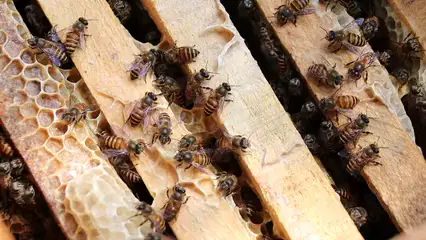
Triggers for Stinging
What prompts a bee to sting? The most common triggers include perceived threats to the hive or themselves. For instance, when a predator approaches, honeybees release alarm pheromones. These chemical signals alert other bees, resulting in a collective defensive response. The scent of danger can lead to a flurry of stings, as bees work together to fend off intruders.
Interestingly, honeybees are more likely to sting when they feel cornered or handled roughly. This instinctive reaction ensures the survival of the colony. It’s important to remember that bees typically sting in defense. Their venom isn’t designed to harm humans but rather to deter genuine threats. Unfortunately, when they sting humans, the consequences can be dire for the bee. If you want to be prepared for such situations, consider having an Insect Bite Relief Stick handy for quick relief!

Environmental and Ecological Impact
Importance of Bees in Ecosystems
Bees play a vital role in our ecosystems, particularly as pollinators. They contribute significantly to food production by facilitating the pollination of many crops. Without bees, many plants would struggle to reproduce, leading to decreased food availability. This, in turn, could have dire implications for human nutrition and agriculture.
Understanding bees’ behaviors, including their stinging mechanisms, helps highlight their ecological importance. Protecting bee populations is crucial for maintaining biodiversity and ensuring food security. Their sacrifices, however tragic, underscore their commitment to the colony and the environment as a whole. By appreciating their role, we can foster initiatives that support bee conservation and promote healthy ecosystems. If you want to contribute to this cause, consider planting Wildflower Seed Bombs for Pollinators. They’re a fun and effective way to support your local bee population!

Implications for Humans
Bee stings can be an unwelcome surprise. For those allergic to bee venom, the stakes are higher. A bee sting can trigger severe allergic reactions, even leading to anaphylaxis. This serious condition can manifest through symptoms like difficulty breathing, swelling in the throat, or hives. If you or someone nearby shows these signs, it’s crucial to seek immediate medical help.
First aid for bee stings is straightforward yet essential. The first step is to remove the stinger promptly. The longer it stays, the more venom is injected. You can gently scrape it out using a fingernail or a credit card. Avoid pinching or pulling, as this may release more venom. After the stinger is removed, wash the area with soap and water. Applying a cold compress can help reduce swelling and pain. Over-the-counter antihistamines may also help alleviate itching and discomfort. Consider keeping some Antihistamine Tablets in your first aid kit for quick relief!
Understanding how to respond to bee stings can be life-saving. Staying aware of the risks, especially for those allergic, can help prevent serious consequences while enjoying nature’s buzzing wonders.
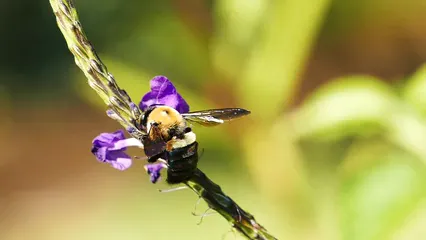
Conclusion
Honeybees’ self-sacrificial behavior after stinging is a fascinating blend of biology and evolution. Their barbed stinger, designed for effective defense, leads to their demise when they sting thick-skinned animals like humans. This tragic fate plays a crucial role in colony survival, as the pain inflicted on the intruder can deter further attacks, ensuring the hive’s safety.
So, the next time you spot a honeybee, remember the vital role it plays in our ecosystem. While their stings can be painful, these little pollinators contribute greatly to our environment. Let’s appreciate their hard work and be cautious of their stingers. After all, it’s a small price to pay for the essential services they provide, like pollination, which is critical for food production and biodiversity. And if you’re feeling adventurous, why not try your hand at beekeeping? A Beekeeping Starter Kit can set you on the path to becoming a bee guardian!
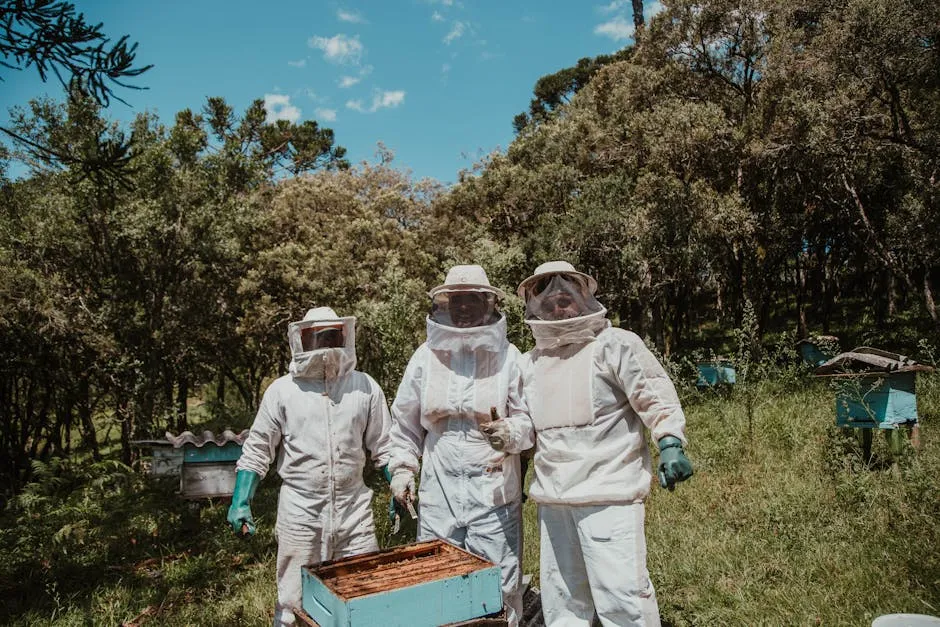
FAQs
Do all bees die after stinging?
Not all bees meet a grim end after stinging. Honeybees are unique in this aspect. They typically die following a sting, unlike many other bee species. Bumblebees, for example, can sting multiple times without any fatal consequences. Their stingers lack the barbed structure that traps the stinger in skin. So, while honeybees face a tragic fate, their cousins carry on, sting after sting, living to buzz another day.
Why do honeybees sting humans specifically?
Ah, the age-old question! Honeybees sting humans mainly because of our thick skin. Their barbed stinger is designed to latch onto tougher targets, making it tricky for the bee to withdraw. When a bee stings a human, it’s not a gentle poke; it’s a full-on invasion! The barbs grip tightly, causing the bee to become trapped and unable to escape without tearing itself apart. Talk about an unfortunate misunderstanding!
Can a bee survive after stinging another insect?
The outcome changes dramatically depending on the target. If a honeybee stings another insect, it often escapes unscathed. Insects typically have thinner exoskeletons, allowing the bee to withdraw its stinger easily. In these cases, the bee’s life continues, unfazed by the sting. So, while honeybees can become martyrs when stinging mammals, they can thrive after defending themselves against their insect foes.
What should I do if I get stung by a bee?
First things first, stay calm! It’s normal to feel a bit panicked. If you get stung, remove the stinger as quickly as possible. Use a fingernail or credit card to scrape it out. Washing the area with soap and water is essential. After that, apply a cold compress to reduce swelling and pain. Over-the-counter antihistamines can help relieve itching. And if you experience severe symptoms, don’t hesitate to seek medical help. Better safe than sorry!
Are bees aware that they will die if they sting?
The consensus among experts is a resounding no! Bees do not possess the cognitive ability to understand the consequences of their actions. Their instinctual behavior kicks in when they perceive threats, prompting them to defend their hive. They don’t weigh the risks of their stinging decision. It’s all about survival in the moment, driven by nature’s hardwired instincts rather than conscious thought. So, while it might seem tragic, it’s simply a part of their life as dedicated defenders of the hive.
Please let us know what you think about our content by leaving a comment down below!
Thank you for reading till here 🙂
All images from Pexels




